Related Tags
Check out these stunning vintage rarities in Gary Gand’s Palm Springs home
Over the years, musical-instrument-industry veteran Gary Gand has amassed as many stellar guitars as he has great stories. We head out into the Californian desert in search of a guitar oasis.
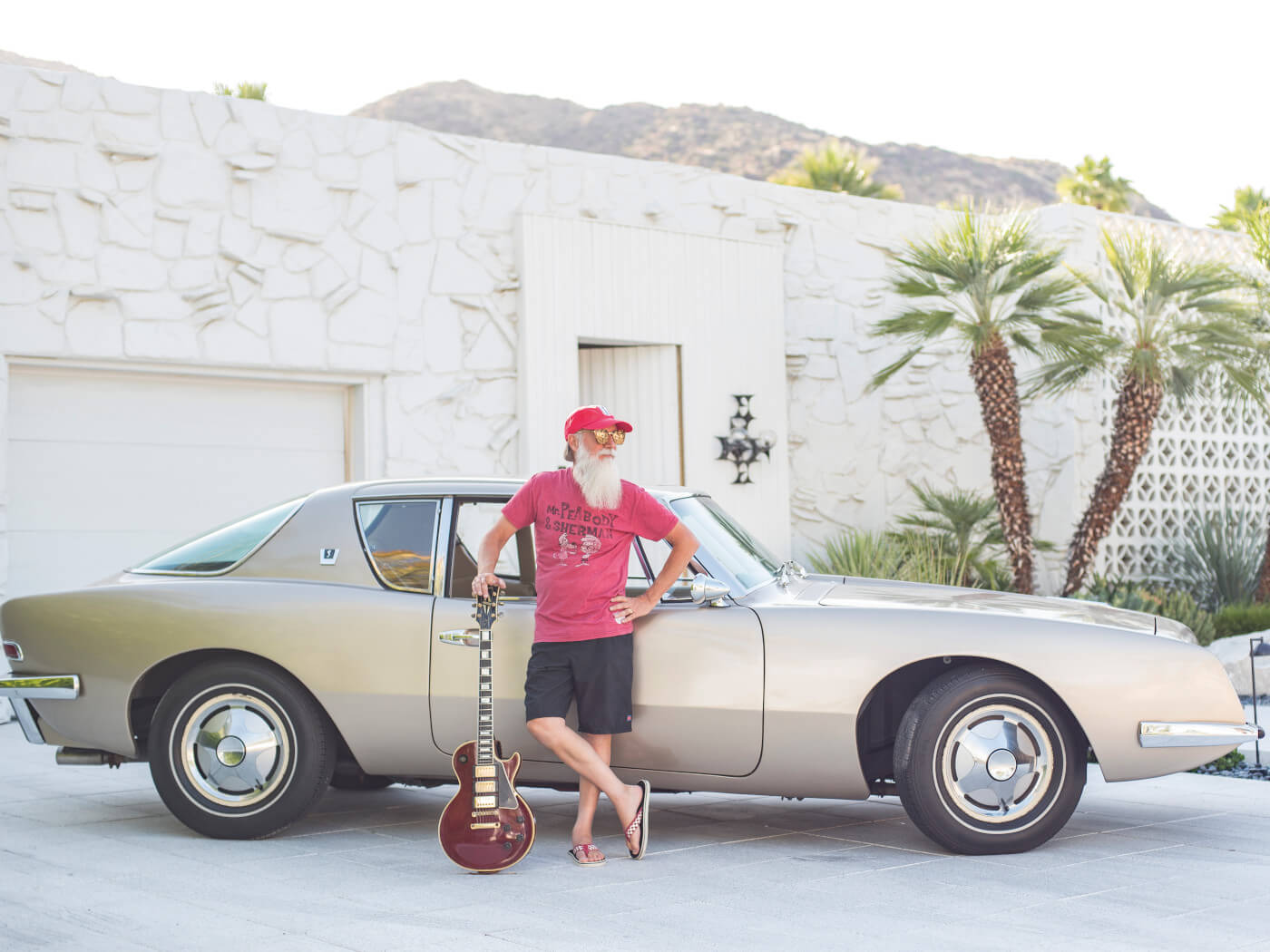
All images: Eleanor Jane
In the arid heat of California’s Coachella Valley lies the city of Palm Springs, a time capsule of mid-century modern architecture and a place that feels just as glamorous and luxurious as old Hollywood seems to those of us born generations later. Everywhere you turn, it’s clear skies, palm trees and bright deco signs for little antique shops that house delightful knick-knacks, Tiki bars whipping up perfection by the glass and the Shag gallery proffering très chic cocktail-party prints.
Palm Springs happens to be the location for our date with musician, collector and architectural preservationist Gary Gand, who currently resides in the breathtaking and palatial Morse Residence. Parked out front is a ’63 Avanti in a lustrous gold finish, which we carefully circumnavigate as we make our way up the gleaming white terrazzo path toward the largest door we have ever seen. The former Alexander tract home, ‘glamourised’ by famed architect Hal Levitt in 1961, is a vision of class with its white breeze blocks and lush green lawn. The feeling of being criminally underdressed creeps over us, swiftly replaced by relief when Gary greets us in nothing fancier than a T-shirt and shorts.
His kind eyes peer from beneath a red baseball cap and his beard could give Billy Gibbons a run for his money. His wife Joan, on the other hand, is the embodiment of the phrase, “Welcome, friends” in her floor-length blue-and-green dress, offering refreshment while ushering us into the spacious, sunken living room with retractable walls for easy pool access.

Gary was a forerunner in the world of music retail, having played all of the major roles: musician, guitar tech, business owner and sound professional. His incredible foresight made him one of the first to work primarily in parts and repairs and when electronic music changed the face of popular music, Gary rushed to add Moog to his product line. Later, Gary realised Apple computers could one day replace the giant spools of tape used in recording studios, so he worked with the company to make that idea a reality.
Growing up in Chicago, music was a family affair. His father, a former trumpeter and lighting executive, had such an aptitude for teaching music that would eventually lead him to quit his job. “He bought a Stella originally for my mom, but he picked up a Mel Bay book on a Friday, and by Saturday night, he had it all figured out. By Sunday, the rest of us were in the basement taking lessons from him.”
When the ‘folk scare’ happened, his father formed a family folk trio with Gary on banjo, his sister on vocals and himself on guitar. They booked gigs in Arkansas and Virginia and even at the famed University Of Chicago Folk Festival in support of the Civil Rights Movement. “We were fighting segregation and the weapon of choice was Michael Row Your Boat Ashore.”
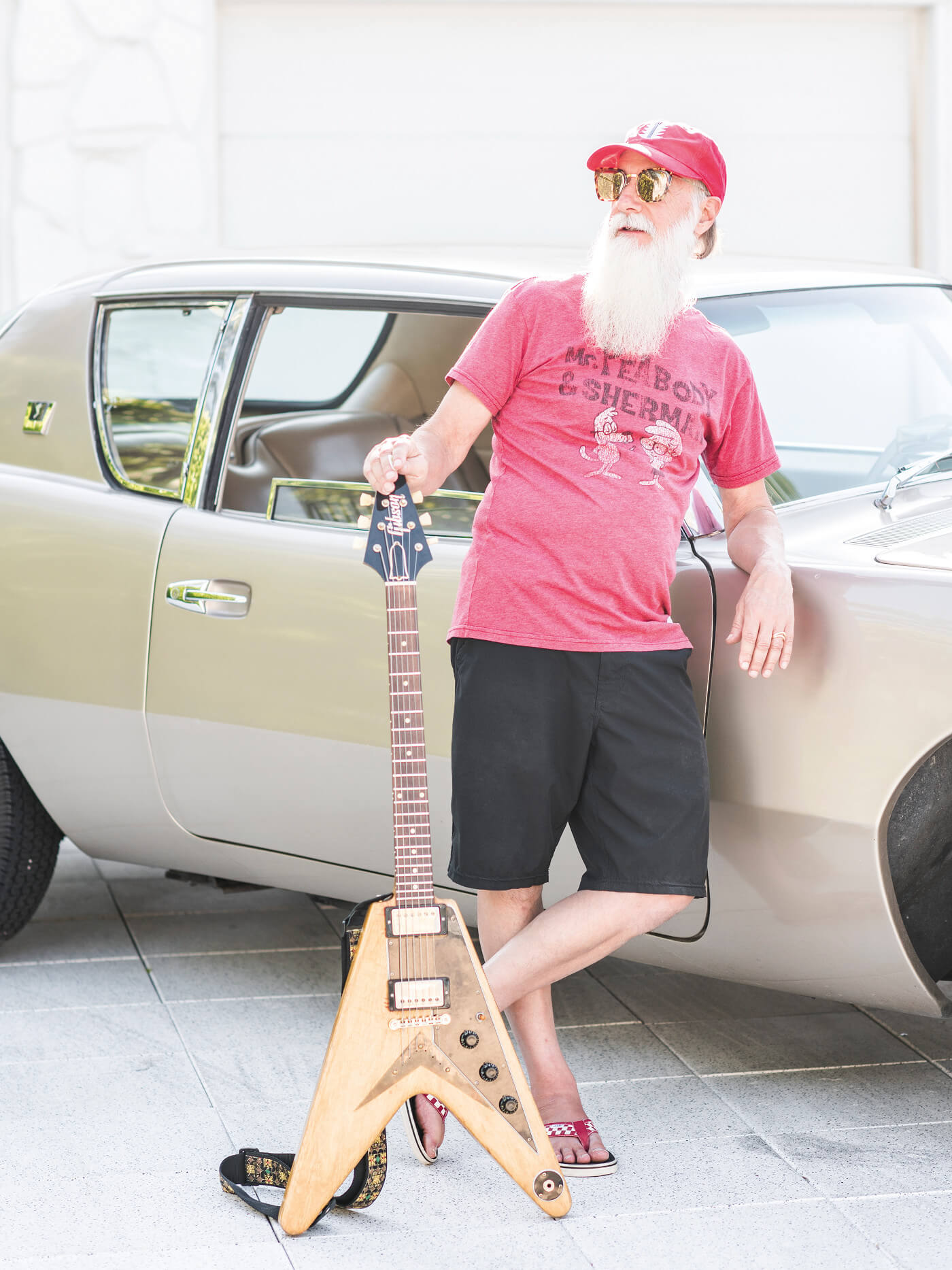
Gary cites the New Lost City Ramblers (featuring Mike Seeger) as an early influence. Thanks to the festival circuit, Gary met Seeger as well as Howlin’ Wolf, Muddy Waters and Bukka White. There were days spent visiting with Flatt & Scruggs, eating fried chicken at Doc Watson’s house, all while driving around the country with his family. All in all, Gary’s childhood was very different from the little-league summers of his friends back home.
His exposure to the guitar was near-constant, but it wasn’t until he came across a little-known band from Liverpool that he finally picked up the guitar at the age of 10. “My dad says: ‘Hey, we should watch this band from England.’ Folk was already dying by that time. I still played banjo, but The Beatles made me want to play rock ’n’ roll.”
’64 Firebird
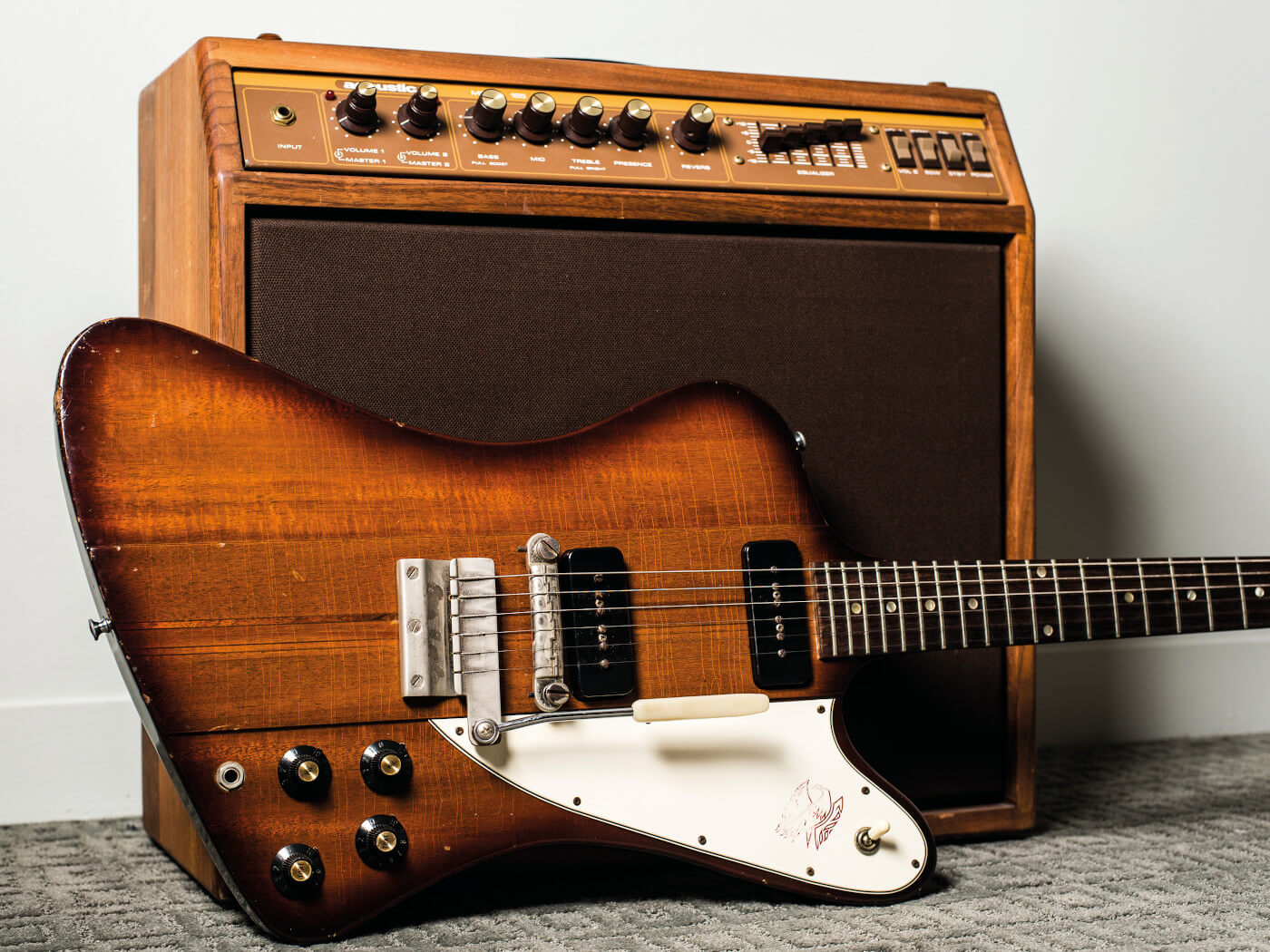
The first guitar Gary shows us has significant sentimental value for Gary. As the story goes, a ’64 Firebird – not this particular bird, mind you – was his very first guitar. He tried one at a local music store and took a shine to it, but left empty-handed due to a huge cigar burn that Gary didn’t like. Dad took notice and soon surprised Gary with one of his own.
“When I got that guitar, nobody was playing them,” Gary admits, noting just how uncool he felt among his guitar-playing peers even though he loved the guitar. Their tune changed the day Cream came to town. “I told my mum: ‘We have to go see them!’ We got $2 tickets at the door – terrible seats – and between sets, I walked up to the stage to check out the wall of Marshalls and The Fool SG.”
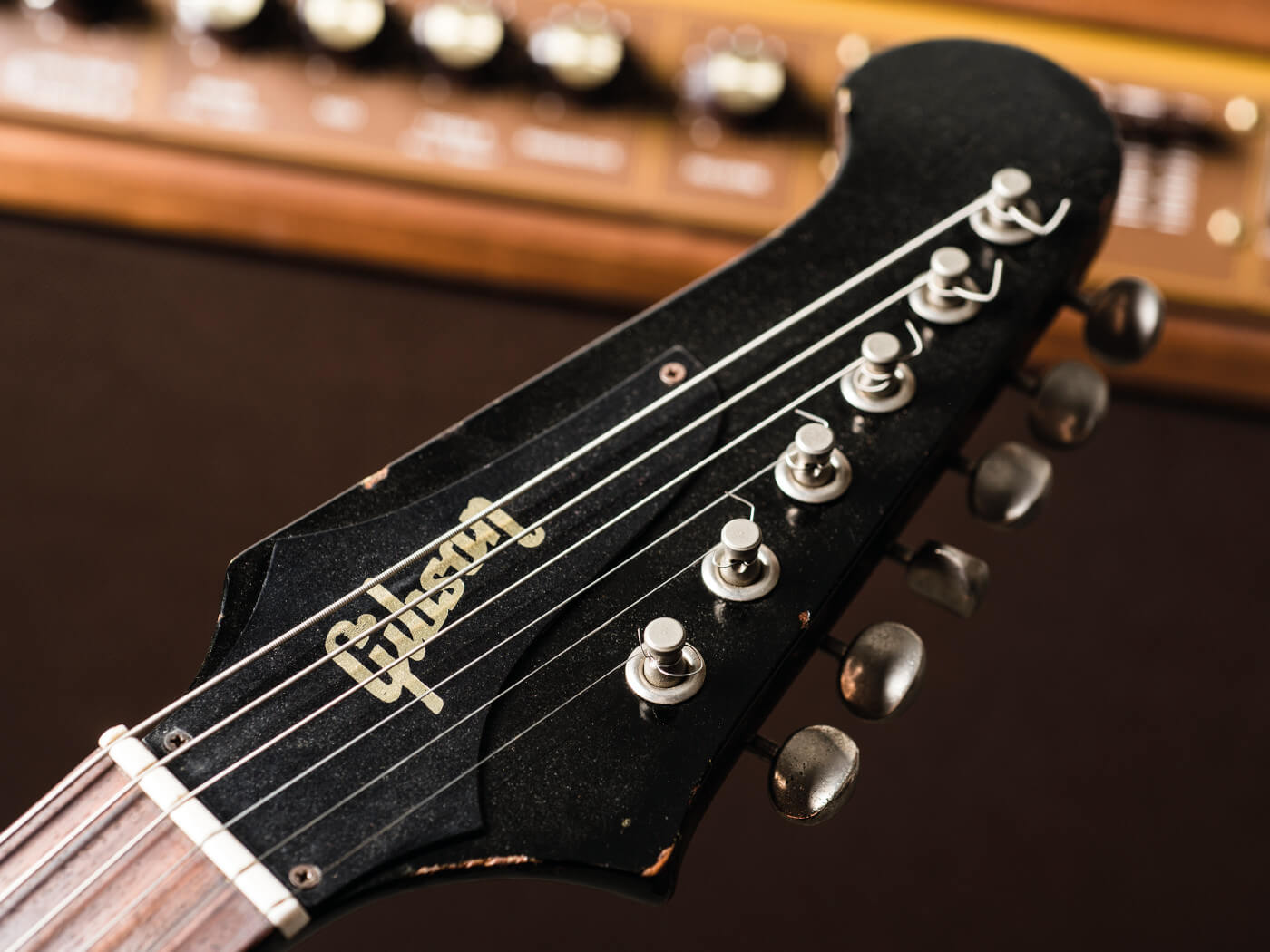
While he was gawking, the house lights went down and the precocious lad took that as his cue to find a seat side stage. And what did he see when the stage lit up? “There was Clapton, playing a Firebird. All of a sudden, I went from being this scrawny kid with the goofy guitar to the coolest kid on the block.”
Gary’s owned a lot of guitars over the years, but he really does seem to fancy this one over all of the others. Just like his long-gone original, this ’64 example is a rare ‘transitional’ model with its reverse body and non-reverse six-in-line headstock, P-90 pickups and short-frame Vibrola. Notably, it does have later knobs which look quite smart with those black pickup covers. Here, it’s leaning against a 1980s Acoustic 160 combo amp.
Red 1959 Les Paul Custom
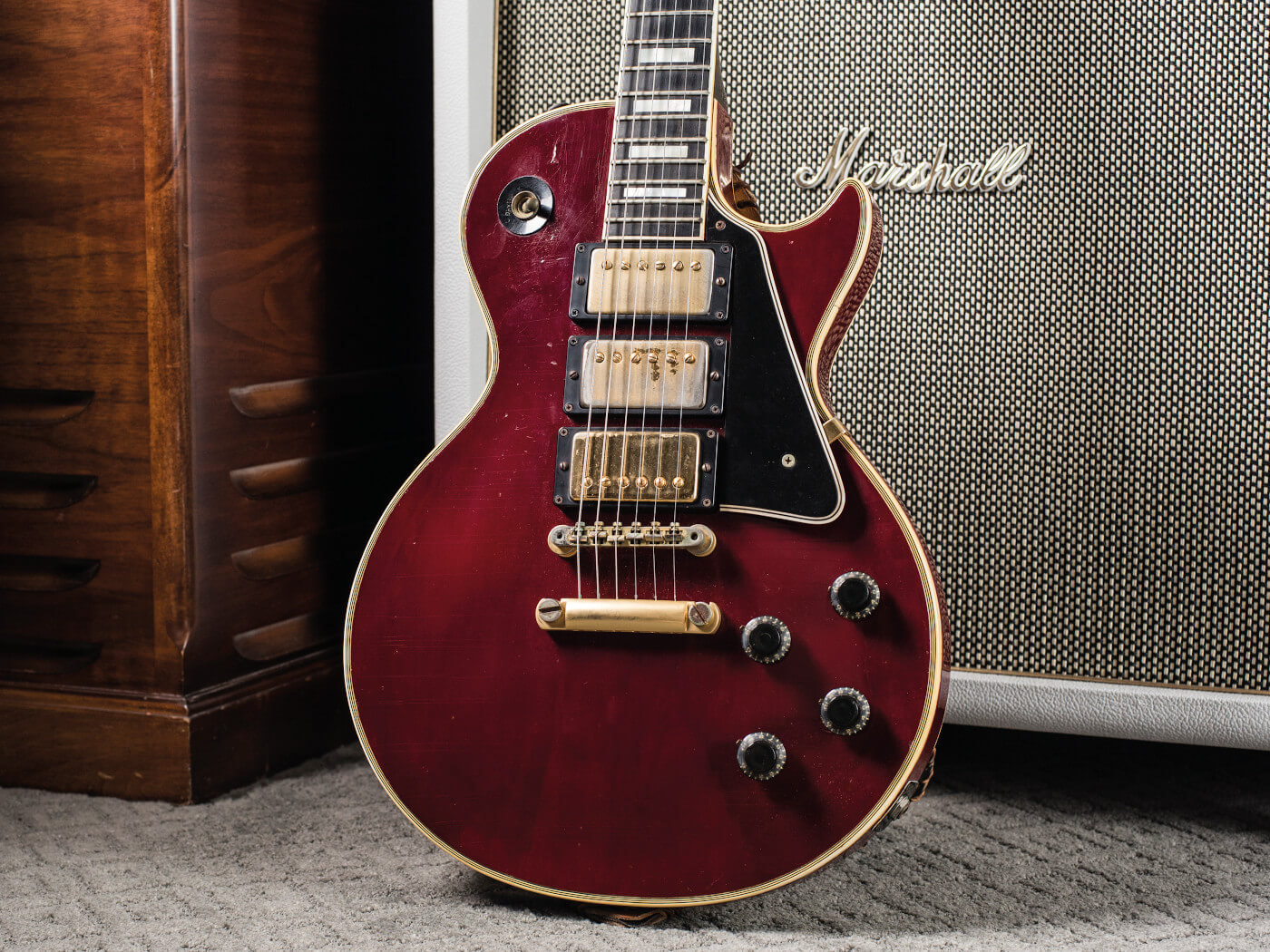
Before the days of the ‘vintage’ guitar market, players sold and traded guitars without regard for rarity and age; the idea of golden-era collectability and future resale value was the last thing on the minds of most working musicians. At 14, Gary kept an eye on classified ads in the local paper, where descriptions were no more illuminating than ‘Fender guitar’ or ‘Gibson for sale’. And that’s just how this intriguing triple-pickup 1959 Gibson Les Paul Custom came into Gary’s possession.
“The ad said: ‘Les Paul, Red, 3 pickups. $250.’ Thinking it was an SG, I called the guy up and said, ‘That’s the wrong colour for a Les Paul. How many horns does it have?’ The guy said, ‘One.’ I tried to explain it to him, but he insisted it was a single-cutaway body.”
Too young to drive, Gary convinced the seller to bring the guitar over to his home the next day and purchased the guitar for two payments of $125, one on the spot and one due the week after. Having never seen a red three-pickup Custom, he spent the ensuing years learning everything he could about the unique instrument. “I know they made about a dozen of these,” he explains. “Six were for a dealer in Sweden who wanted something different. Gibson made the first six, so why not make a few more?”

As for that particular shade of red, Gary speculates that it has something to do with mandolinist Jethro Burns of the country music duo Homer & Jethro, who ordered a red Florentine mandolin from Gibson around 1958 for use on television. Gibson may have used that same colour for this guitar, markedly redder than traditional Wine Red.
The 10.2lb beast remains largely as it was the day Gary obtained it, albeit with added play wear from the intervening years. It features its original gold Grover tuners, three PAF pickups and frets worn nearly flat, though it looks to have had some prior fretwork. The finish has checked subtly and the clear coat has taken on an amber tint. Here, it’s perched before a 7/8-sized Ceriatone full stack that he had custom-built as a tribute to the amp which served as catalyst for Gary opening Gand Music.
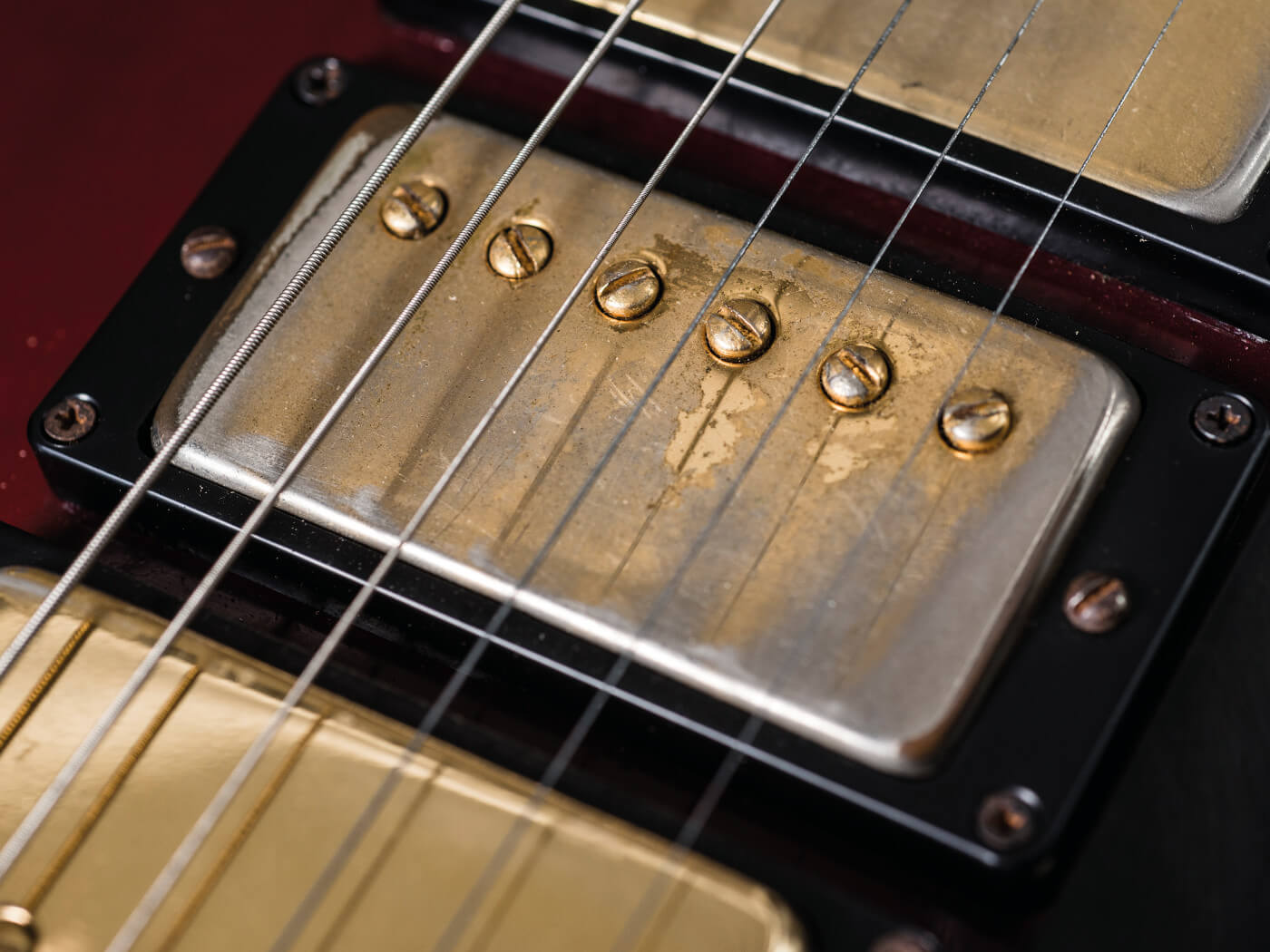
“I ordered a white Marshall stack just like the one in the 1970 catalogue. When it showed up, I plugged it in and it started smoking. It took a long time to come back from the shop and the unscrupulous tech who did the work waited to call me for pick up until the warranty period expired, so I had to pay for it. I was so pissed off that I started my own store.”
Fed up with the way musicians were being treated, Gary decided to change the culture from the inside, upending the established routine of retail sales. “We were shopping at malls and organ stores talking to guys who didn’t know anything. I wanted to be a liaison between musicians and manufacturers. And when I finally opened the store, the first thing I put up for sale was that freaking amp.”
White 1964 SG Custom

No stranger to the stage, Gary found himself in an untold number of bands and jams over the years. In fact, he, Paul Hamer, and Jol Dantzig (of the Hamer guitar company) had a band in the early 70s! Ever active in the music scene, Gary came to this stunning piece by way of yet another jam-band situation.
“I met this local guy who was moving to Europe and that he needed someone to take his place in his band. One night, the band invited me on stage, so I sat in and I guess they liked me, because after the gig the guy comes up to me and says: ‘Listen, I’m quitting and that was an audition.’”
One condition of joining the band was that Gary had to purchase this white SG, but he doesn’t seem fussed over it. “I wasn’t an SG guy back then – this was the 80s – but there was Clapton and Krieger. Angus was happening back then.”

This ’64 model is still in excellent shape considering its age and how much it’s been used. It’s mostly original, although Gary suspects the truss-rod cover to be a replacement. It has a thin, fast neck profile as well as a Bigsby vibrato. With as much play as this one’s seen over the years, it’s remarkable that the frets still have plenty of life left and even the binding nibs appear to have survived. Original gold hardware, waffle-back tuners and a stunning faded white finish that has the requisite chips and cracks of a well-played, well-loved instrument.
1960 Gibson Les Paul Standard
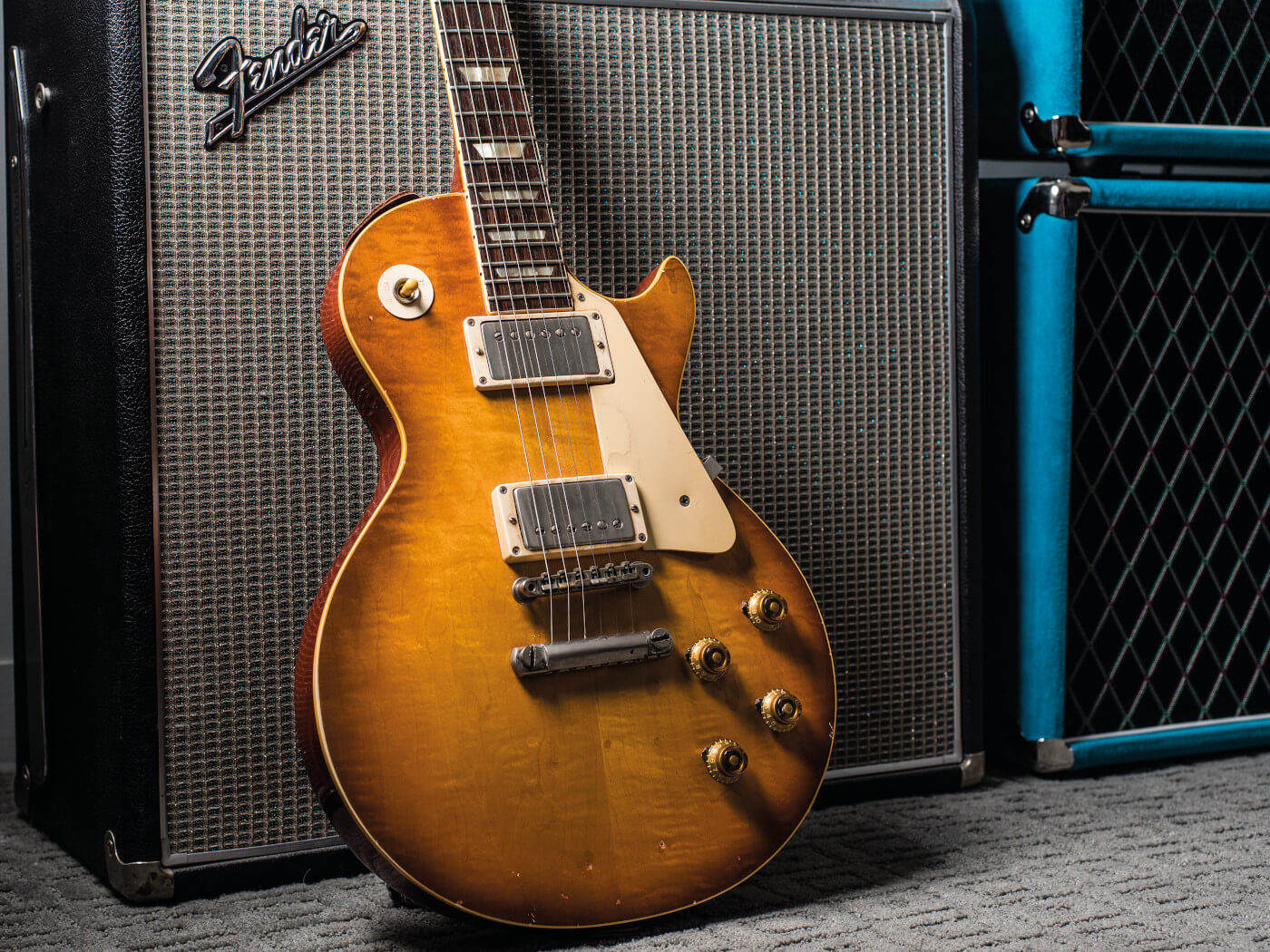
If this 1960 Les Paul Standard looks familiar to you, that may be with good reason. Featured in the pages of the Vic DaPra book Burst Believers, this particular Burst may be a fully restored guitar, but in Gand’s opinion, it “blows away so many original examples”.
Nicknamed ‘Le Freak’, the guitar has been refinished and refretted, but retains most of its original parts. Pickups, hardware and tuners are all accounted for, though the guitar shows signs of having worn a Bigsby with still-visible mounting holes poking through its subtly flamed, honey-toned top. It’s a light Les Paul at 8.2lb, with a fast neck and the kind of strident attack that seems synonymous with lighter instruments.
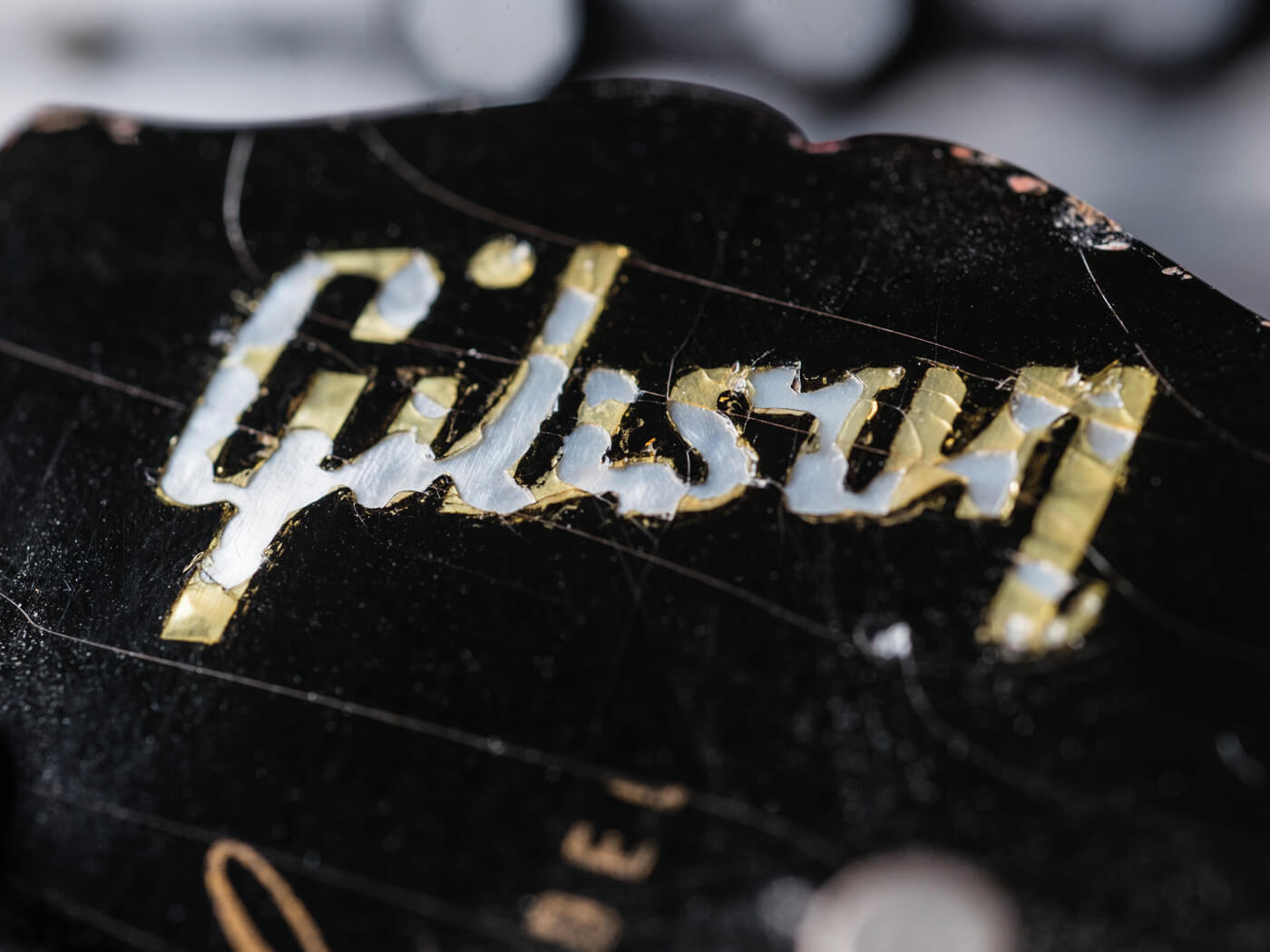
“It’s squawky and nasty, not like the hairy, beefy sound of others,” he offers. Other collectors may have dismissed a refin out of hand, but guitars with issues seem to be right up Gary’s alley. “The greatest Les Paul in the world is Jimmy Page’s and that guitar was refinished, so what does that tell you?”
1954 Fender Stratocaster #0163
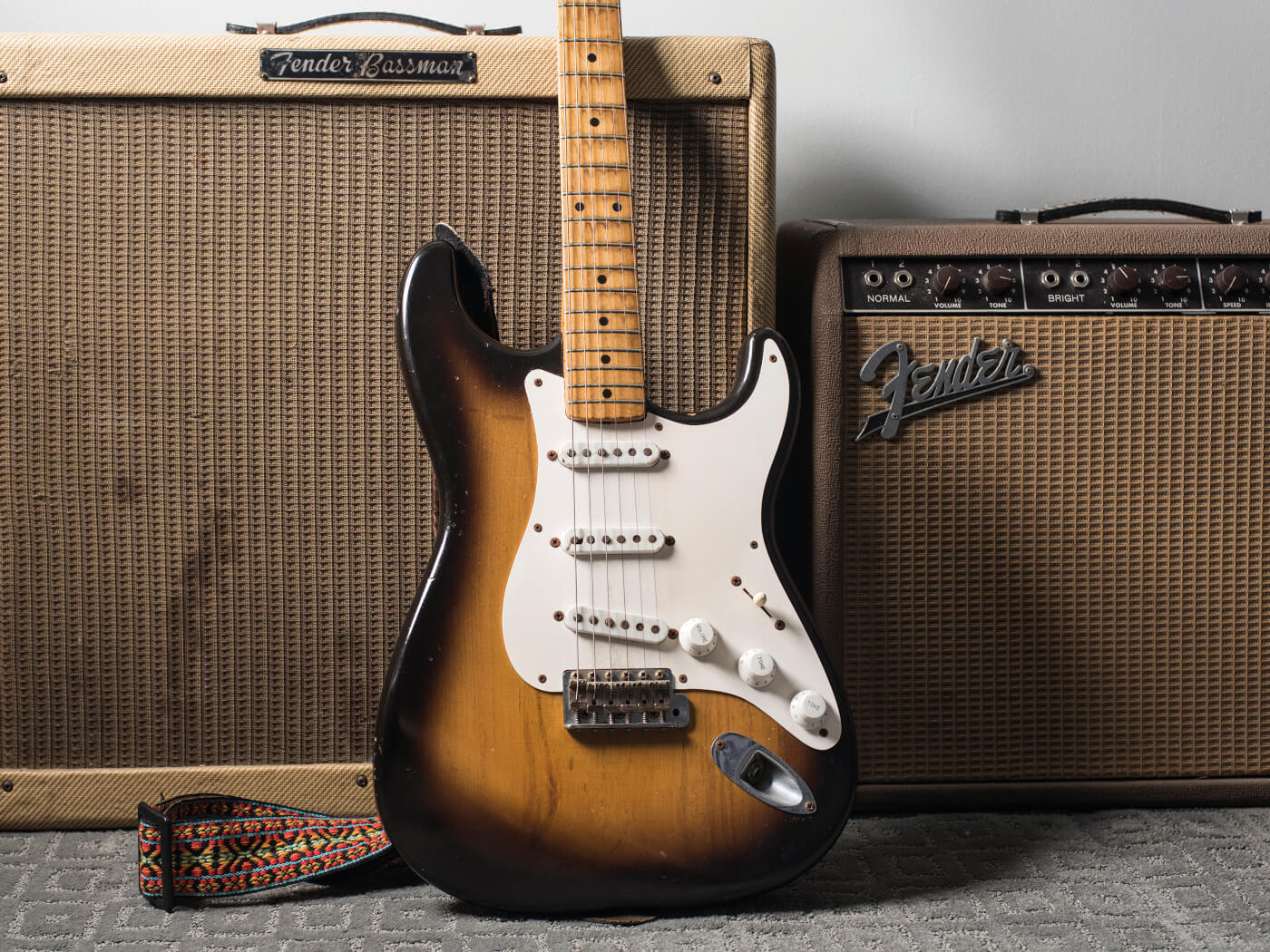
By this point in the interview process, guitars are being swapped from person to person in a flurry of activity, but the only person in the room unphased by the dollar value of this juggling act is the owner. “I play all of these guitars out on the town,” he reassures us. “I’m not a trailer queen about it. Don’t worry.”
Gary hands off his 1954 Stratocaster to us with a wry smile. “This is my go-to guitar, no big deal.” The backplate has #0163 stamped into it, clearly an early example. This Stratocaster boasts the highly coveted V neck, original pickguard and pickup covers, the original single-line Kluson tuners, a stunning two-tone Sunburst finish, and play wear denoting years spent in the cowboy-chord positions on the neck.

When he got this guitar in the 90s, Gary says it was the best-playing guitar he’d ever felt. In fact, it played so well that he hasn’t changed the setup or strings since! “I never touched this one, never even adjusted the action. It’s so perfect as it is, I’m afraid to change the strings.”
The strings may be black with corrosion, but we can’t argue with the way it plays. When asked how he’d cope with breakage, Gary notes that Roy Buchanan only changed strings when one broke. “Hey, that’s good enough for me.”
1959 Gibson Flying V
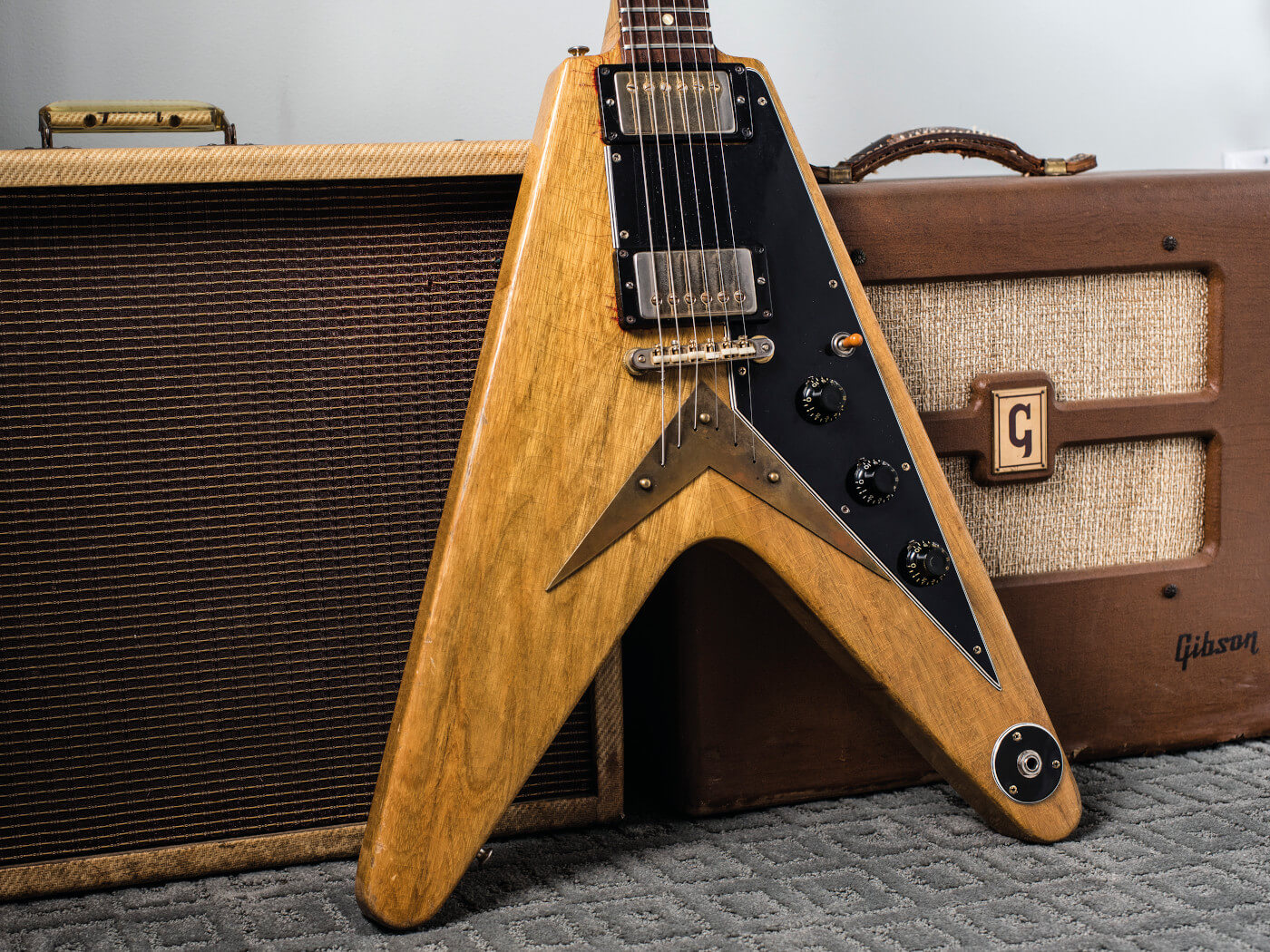
Gary acquired this 1959 Gibson V as a tribute to the great Lonnie Mack, who passed in April of 2016. A longtime fan of the blues-rock master, Gary initially nabbed a red reissue, but soon he found himself pining for the real thing. Eventually he tracked down this guitar at a bargain price.
“The issues made sure it was priced reasonably,” Gary states matter-of-factly before listing them off: “Changed tuners, likely refinished, and a cracked headstock…” He trails off for a moment, then stakes his claim on the notion that such afflictions shouldn’t be deal-breakers. “People say a cracked headstock doesn’t sound as good, but to me, it’s still the same guitar after the fix.”

Gary replaced a few parts here and there, most notably the pickguard, yet it still retains some signs of originality. The gold hardware has weathered and even the telltale reddish “bleeding” around the pickups is present – a reaction between the finish and the M69 pickup rings. Gary’s also added a makeshift ground wire, which you can see here wrapped around the low E string. Strummed acoustically, this Korina V has a shockingly mellow vibe, soulful and plain-spoken.
Ruminating on the obsession with originality, Gary looks at the contrast of the music world with that of car collecting: “The car world doesn’t attach the same value to originality like we do in the guitar world. You can take something that’s scratched, dented, rusty, you replace all the stuff and it goes directly into the value. What you put in comes out of it again. Original tyres? You don’t get bonus points for that.”
1960s Guild Thunderbird
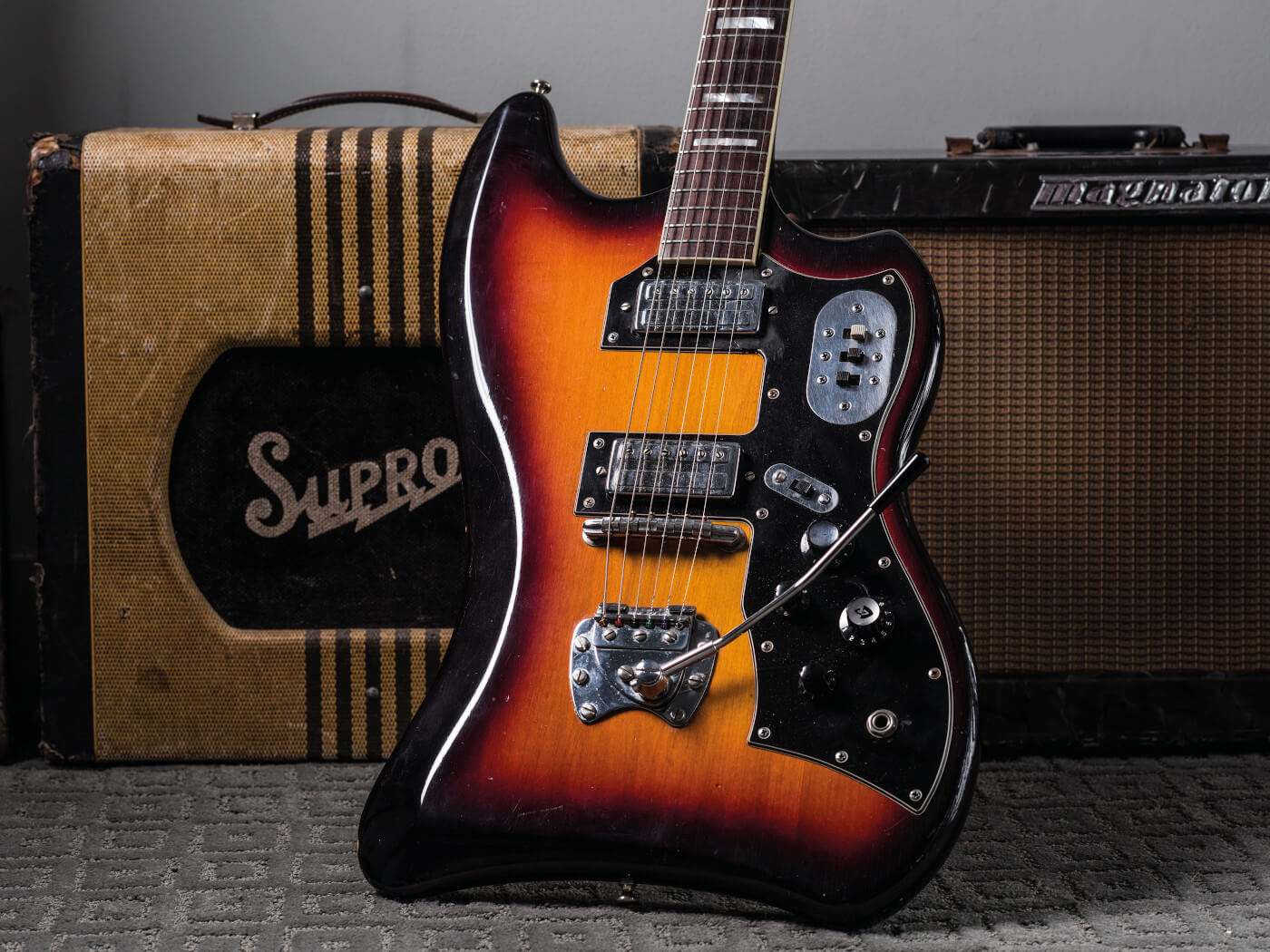
Like a blend of Gibson and Fender features, this Guild Thunderbird is one of the more intriguing instruments in Gary’s collection. He cites Muddy Waters as inspiration, but really it comes down to nostalgia. Shrugging, Gary admits: “I just always thought they were cool guitars.” And really, it doesn’t need to be any more complicated than that.
For example, the Thunderbird neck shape is “classic, chunky Epiphone all the way”. Back when Gibson purchased Epiphone in 1957, some ex-employees formed Guild, so that may explain the similar feel as well as the 24 3/4-inch scale and ‘Anti-Hum’ pickups. As for wiring, the Thunderbird shares a lot more of its lineage with the Fender Jaguar, with switches for pickup selection, high-pass, and pre-set rhythm and lead tones and a switch to bypass the controls altogether. A bit far out for Gibson fans, but right at home with the offset crowd.
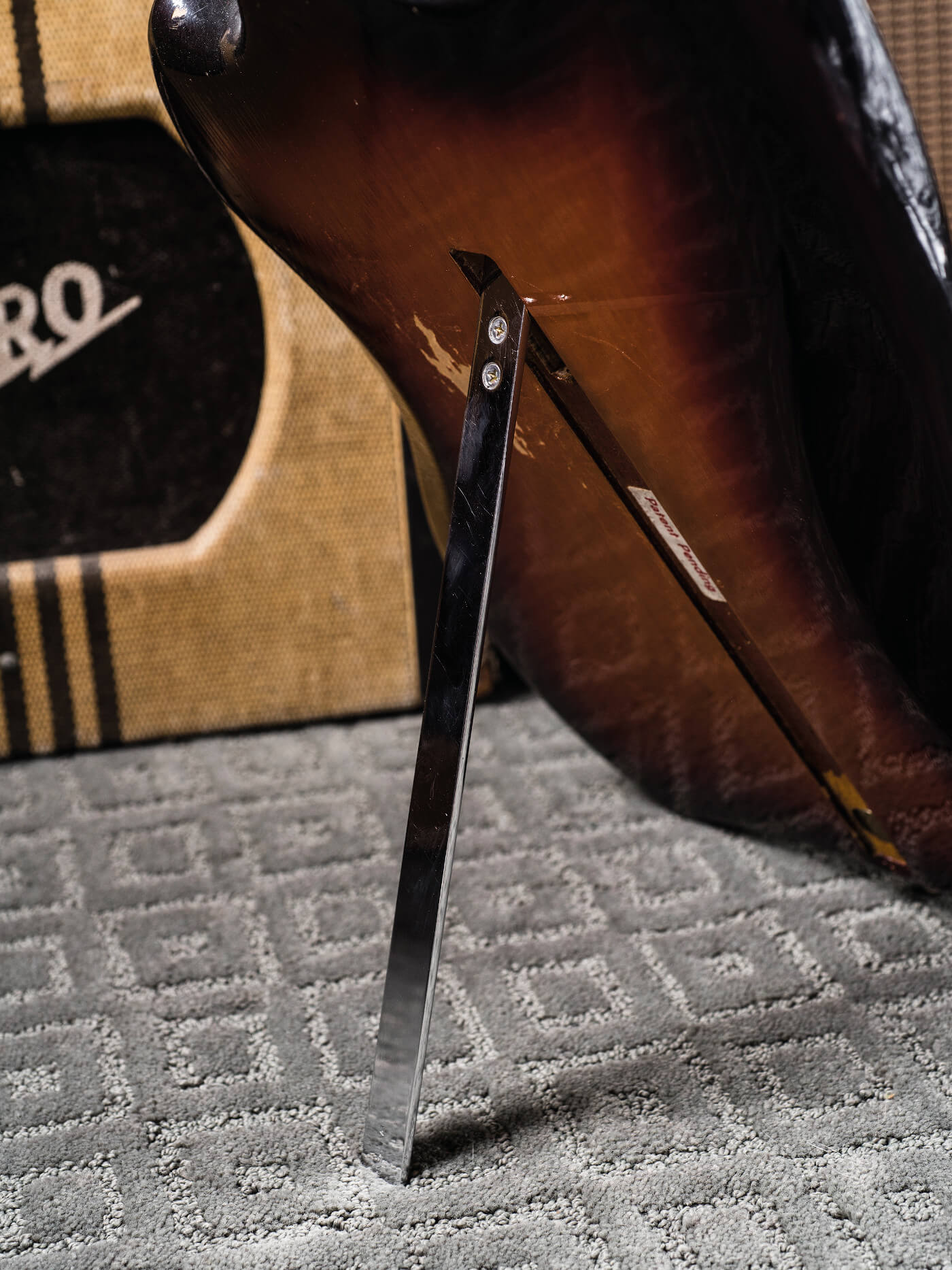
Perhaps the coolest feature of this very cool guitar is the kickstand on the back of its Gumby-esque body. This kitschy gimmick probably made a lot more sense back in the day, which isn’t to say it’s impractical. Simply deploy the metal rod and you guitar remains upright, as if by magic.
c.1958 Gibson ES-5 Switchmaster
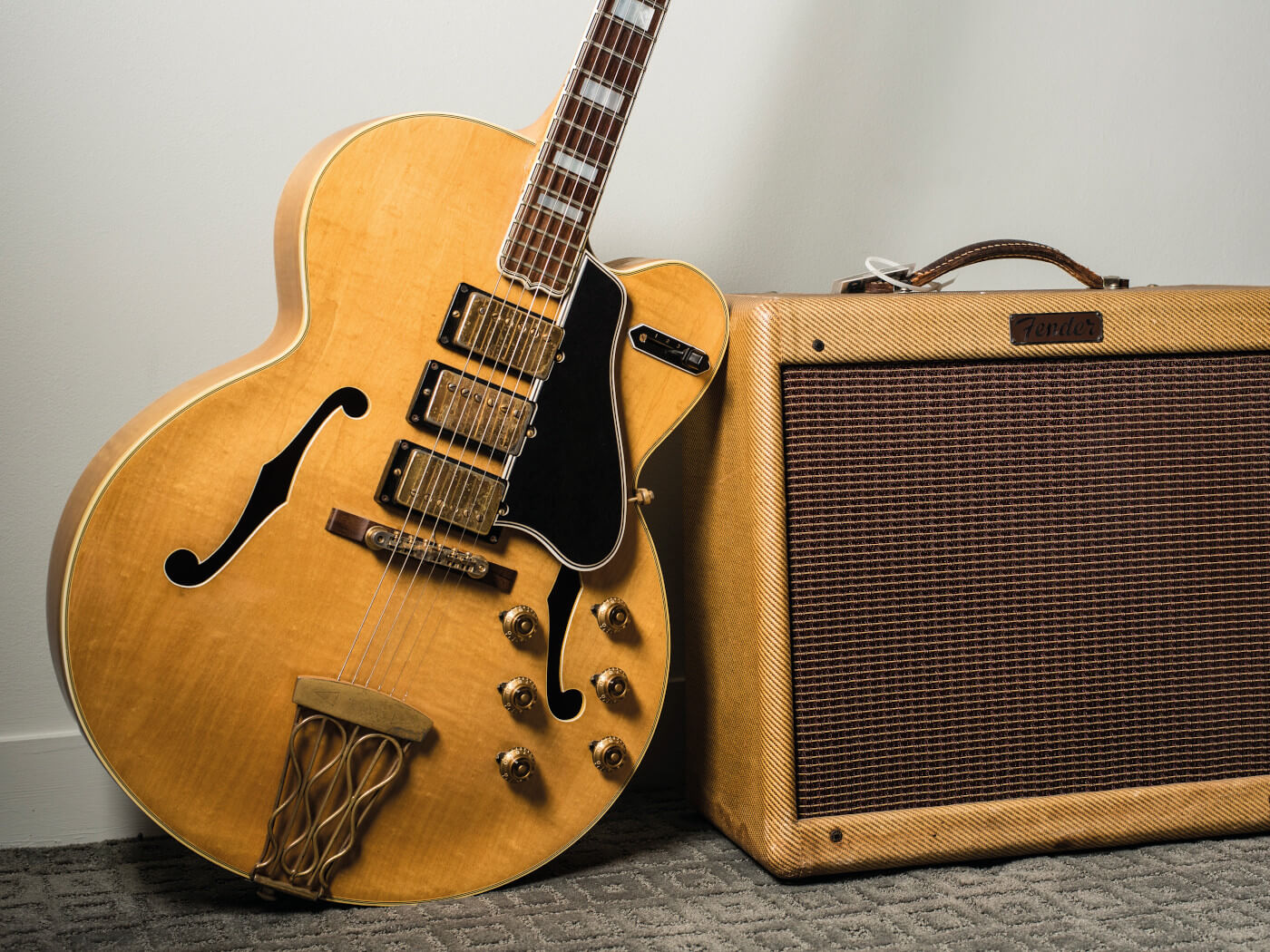
One of two in Gary’s collection, this PAF-equipped model represents its final iteration, previously equipped with triple P-90 pickups. The gold-on-natural look exudes class. Famously played by Carl Perkins, the ES-5 is one of the few instruments Gibson offered at the time with a 25.3-inch scale length, making the Switchmaster a departure from the company’s most common specifications. A four-way switch allows for each pickup to be singled out or all-on in its final position, with volume and tone controls on each for maximum blend potential.
This ES-5 retains all of its original hardware, from the engraved trapeze tailpiece to the Grover Rotomatic tuners. Some binding has lifted and cracked in areas – a symptom of the ageing material – and the finish displays signs of moisture damage along the body’s treble-side edge. Given the affected portions of the body, Gary speculates that the guitar was stored on its side when a basement flooded and some of that finish is still stuck to the case lining.
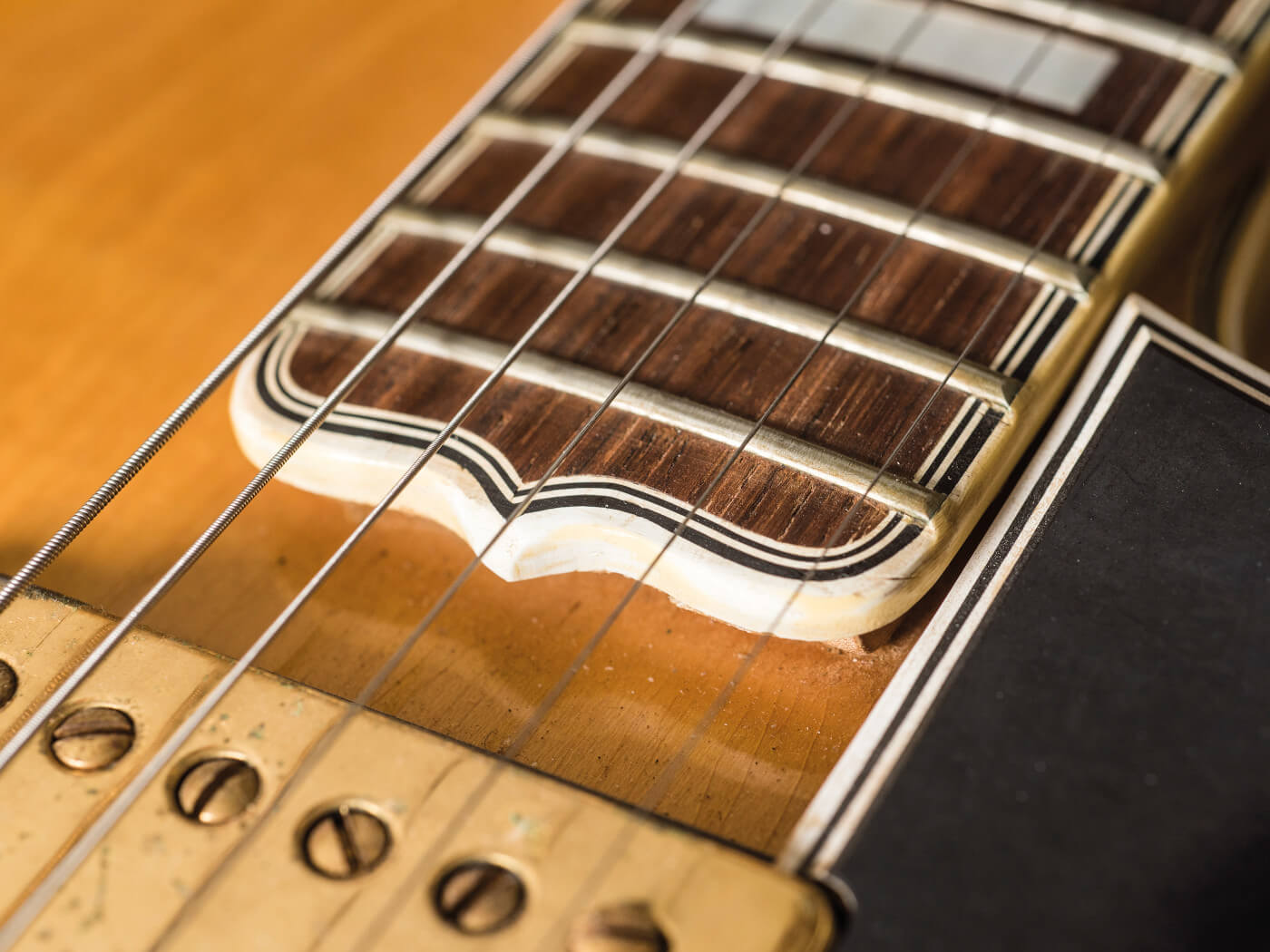
This guitar came into Gary’s possession in the 1990s from a man who had loaned his college roommate $4,000 in 1962 to help him make tuition. The roommate offered this guitar as collateral, promising to pay it all back, but that never happened. Gary asked if the roommate had vanished; the man told him: “No, I see him all the time. He’s a doctor! I keep telling him, ‘I still have your guitar!’ But he’s not interested.” Gary paid him a fair price with some interest on top, and now it’s his go-to guitar for rockabilly gigs.
’67 Gibson Trini Lopez Standard
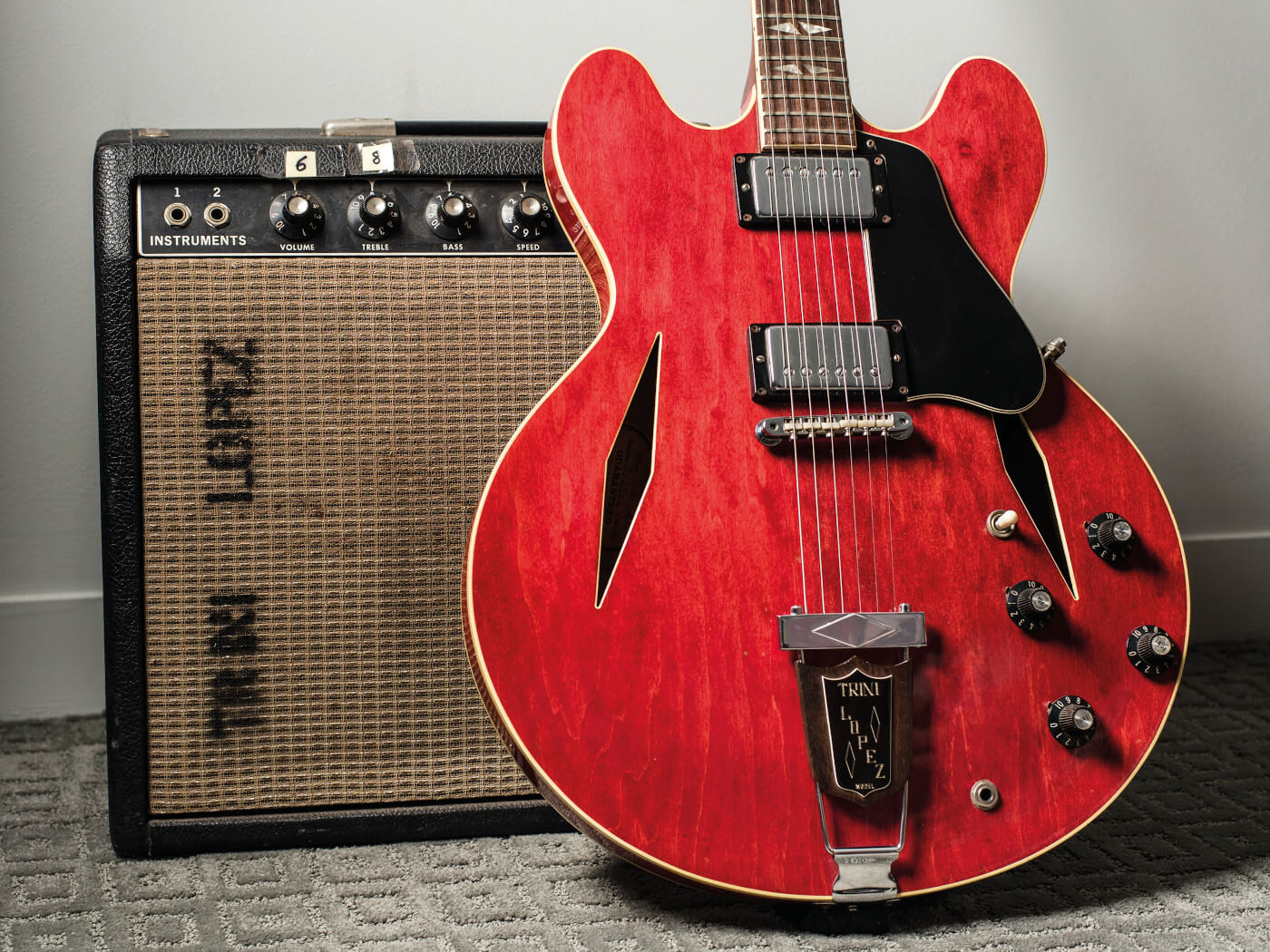
Owning a signature-model guitar can make a person feel closer to the famous player associated with it. But what happens when that namesake is your next-door neighbour?
“Trini is the nicest guy in the world,” a gushing Gary tells us. “He has the best stories, talking about how Sinatra was ‘such a nice man’ and Dean Martin this, Princess Grace [Kelly] that.” The Gands met the famous singer-guitarist about eight years ago at a party and they hit it off instantly. Soon enough, Gary started working on Trini’s guitars and is now in the midst of producing a documentary on the legendary musician. Currently, Gand is custodian to a pristine vintage Gibson Trini Lopez Deluxe, a birthday gift from his wife Joan.

This 1967 model remains totally original with its bright chrome hardware, cherry-red finish, nylon bridge saddles and witch-hat knobs. Similar to an ES-335 of the same year, it’s the diamond-shaped F holes, split-diamond inlays, Firebird headstock and an engraved plaque on the trapeze tailpiece that make it that much cooler. Here, we’ve paired it with one of Trini’s own amplifiers, a circa 1965 Fender Princeton with his name sprayed on the grille cloth.
Wandrè Brigitte Bardot
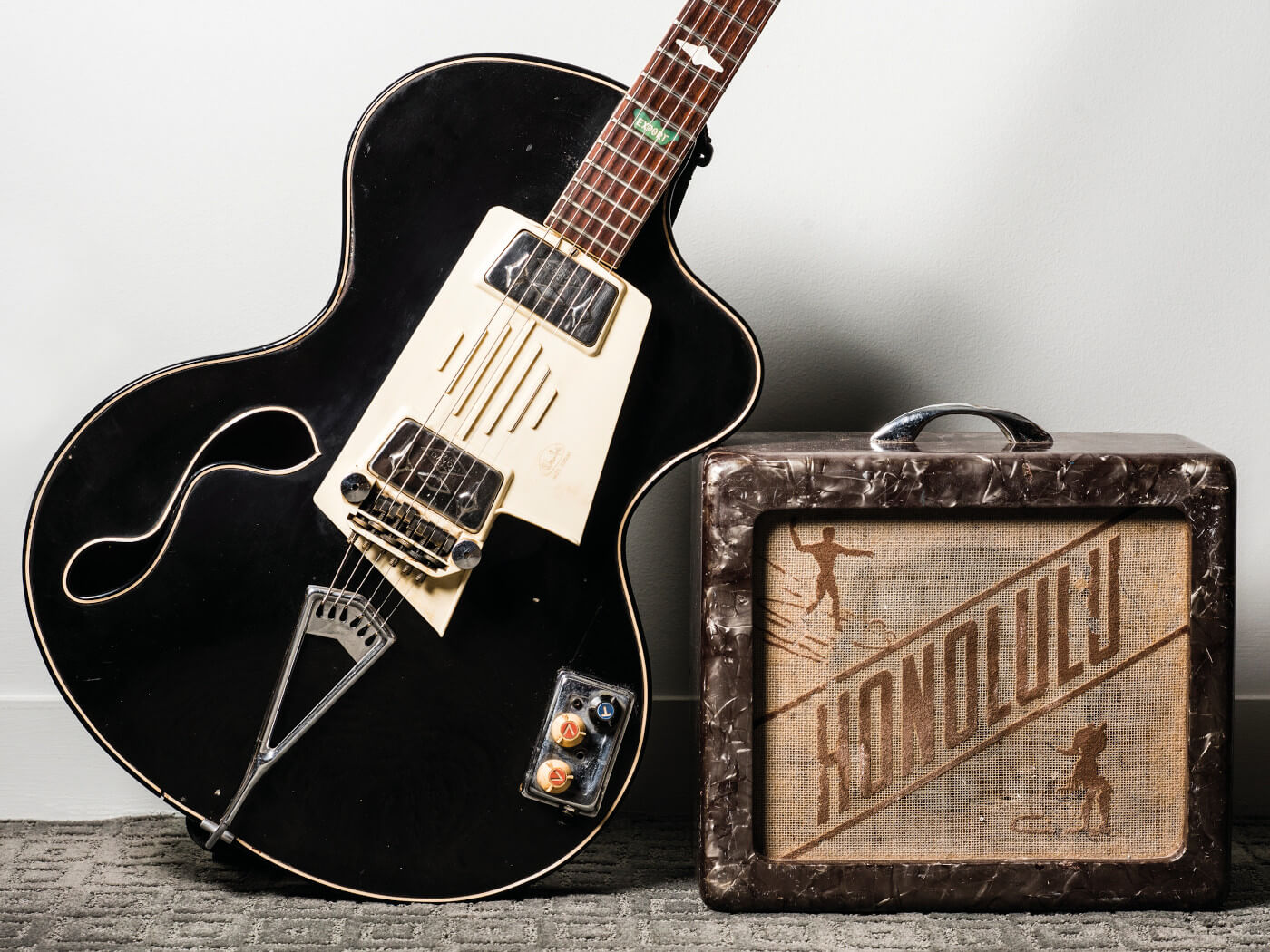
For just over a decade, Italian guitar maker Antonio Vandrè Pioli offered some of the most unique and interesting instruments to hit the 60s scene. These days, they’re tough to find and when you do, it’s likely you won’t like the price, thanks to the reputation for quality workmanship and oddball design elements. Slightly deflated, Gary confesses: “I know I paid too much.”
A Wandrè in such excellent condition is a rarity, to be sure. Named for the maker’s obsession with a certain French actress, this black Brigitte Bardot model also came from France. “A guitar dealer friend of mine called me up and said: ‘I found one in a French music store. If you don’t want it, I’m calling Johnny Depp.’ I said, ‘Yeah, okay, I’ll take it.’”
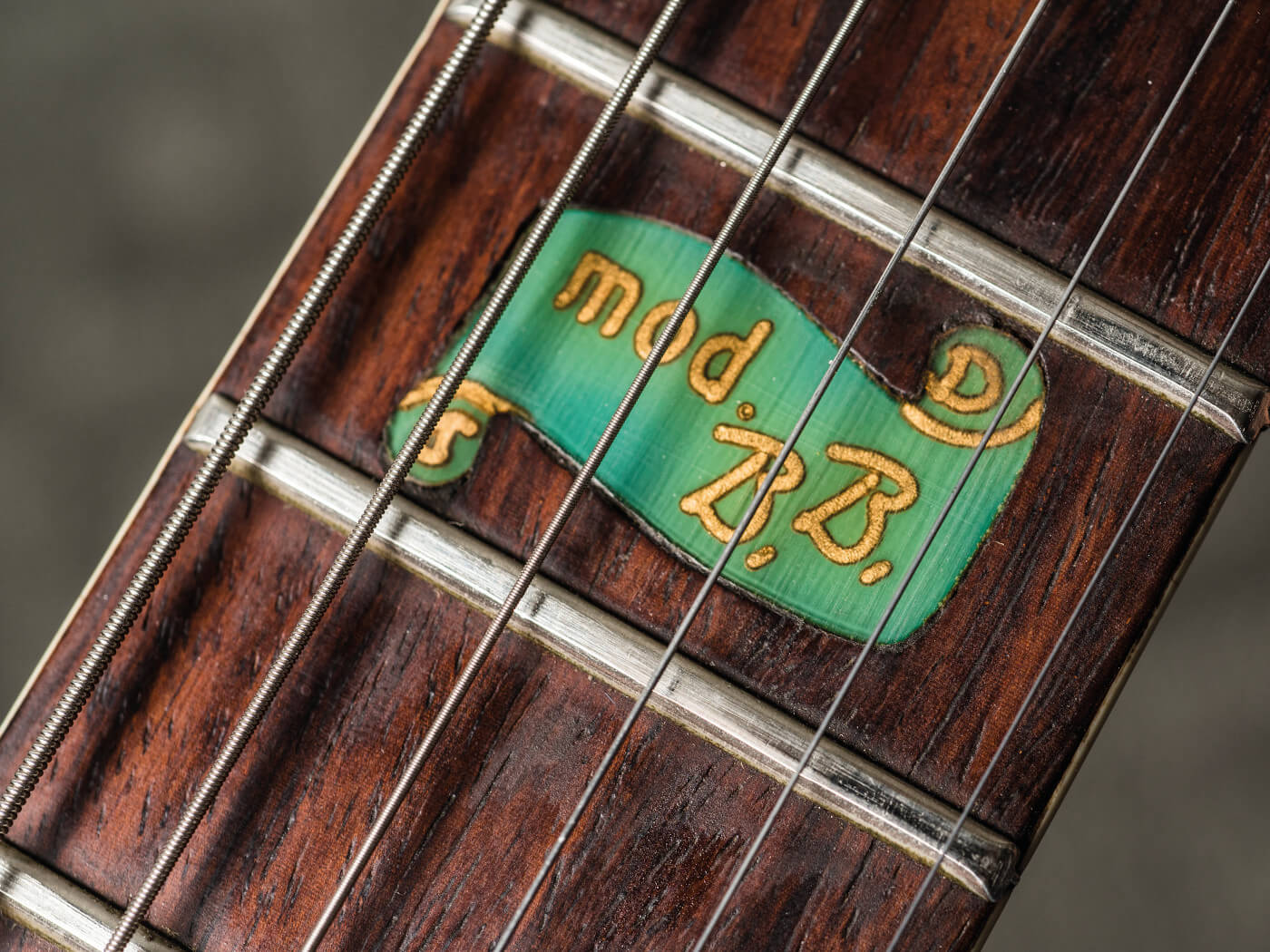
This Bardot is downright beautiful and features some of Wandrè’s most common design elements: trapezoidal pickups, pickguard-mounted pickups and bridge, hinged aluminium ‘broom stick’ neck and an interchangeable headstock design which allowed for customisable configurations. Inlaid into the fretboard are the Wandre logo, the initials B.B., and the designation ‘Export’. Two volumes and a single tone control are mounted to a chrome-plated plate attached to the guitar top and Gary claims the bridge is so easy to adjust that you can make changes between songs. “Say you’re playing a rock song, but you need a slide guitar for the next, you just change it and go.”
“It’s technically the best guitar there is,” he beams, a proud owner through and through. Truly, the Wandrè is eccentric, exotic, and exceptional.
Though impressive to say the least, what we’ve shown here is only a fraction of the six-string magnificence on tap at the Gand household. We could have easily gone through another 10 or 20 guitars and maybe we will down the line. But for now, it’s time to head back west on Interstate 10 and leave the desert sand behind.
Check out more guitar collections here.
